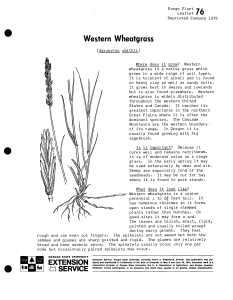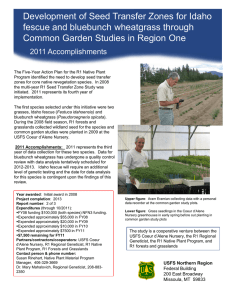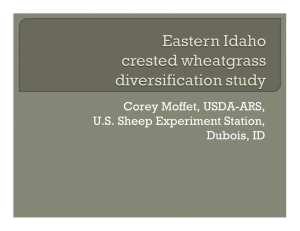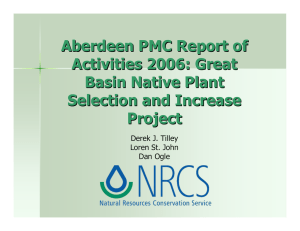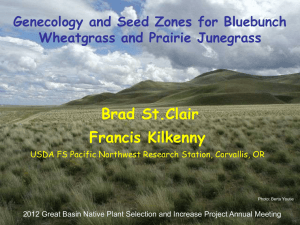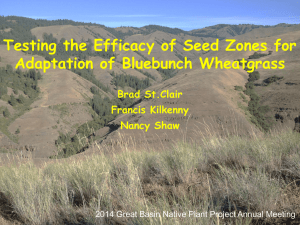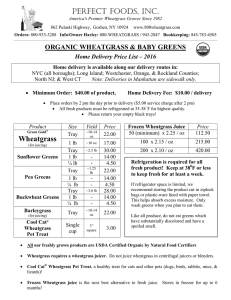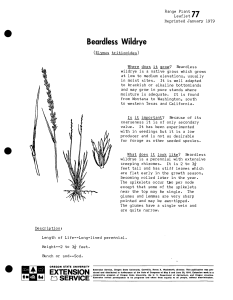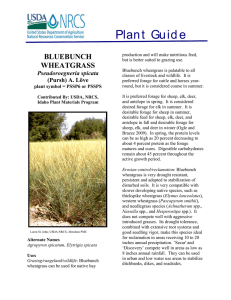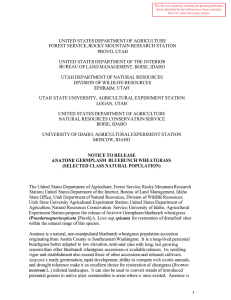Bluebunch Wheatgrass Range Plant yr Leaflet ' J (Aqropyron spicatum)
advertisement
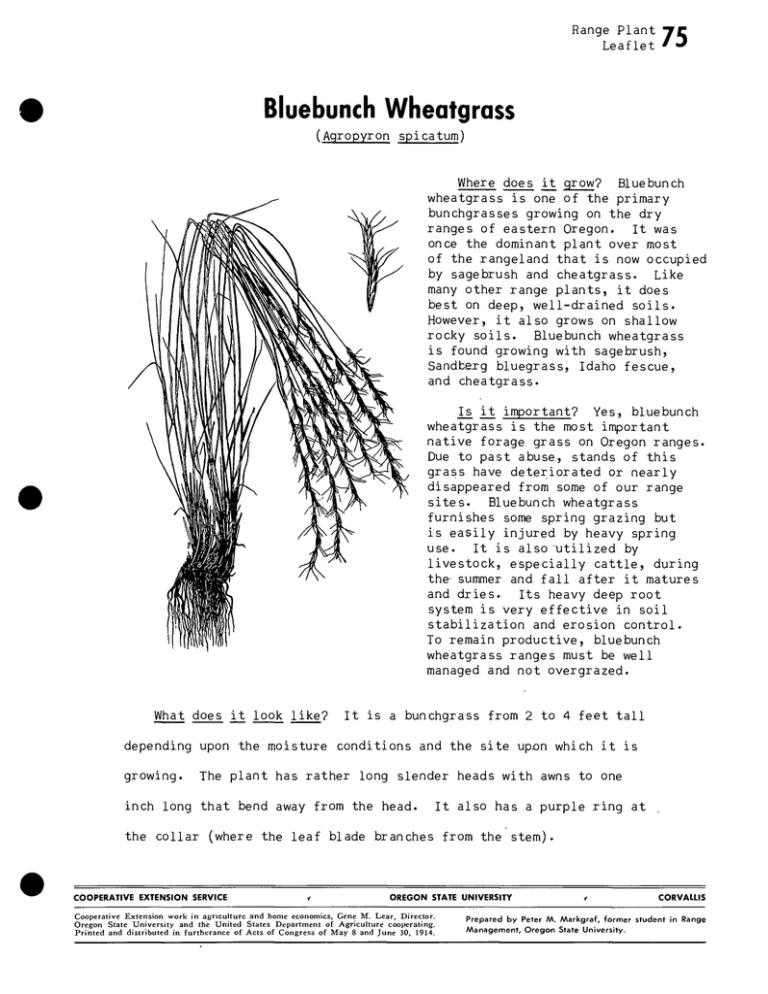
Range Plant yr Leaflet ' J Bluebunch Wheatgrass (Aqropyron spicatum) Where does it grow? Bluebunch wheatgrass is one of the primary bunchgrasses growing on the dry ranges of eastern Oregon. It was once the dominant plant over most of the rangeland that is now occupied by sagebrush and cheatgrass. Like many other range plants, it does best on deep, well-drained soils. However, it also grows on shallow rocky soils. Bluebunch wheatgrass is found growing with sagebrush, Sandbe.rg bluegrass, Idaho fescue, and cheatgrass. Is it important? Yes, bluebunch wheatgrass is the most important native forage grass on Oregon ranges. Due to past abuse, stands of this grass have deteriorated or nearly disappeared from some of our range sites. Bluebunch wheatgrass furnishes some spring grazing but is easily injured by heavy spring use. It is also utilized by livestock, especially cattle, during the- summer and fall after it matures and dries. Its heavy deep root system is very effective in soil stabilization and erosion control. To remain productive, bluebunch wheatgrass ranges must be well managed and not overgrazed. What does it look like? It is a bunchgrass from 2 to 4 feet tall depending upon the moisture conditions and the site upon which it is growing. The plant has rather long slender heads with awns to one inch long that bend away from the head. It also has a purple ring at the collar (where the leaf blade branches from the stem). COOPERATIVE EXTENSION SERVICE OREGON STATE UNIVERSITY Cooperative Extension work in agriculture and home economics, Gene M. Lear, Director. Oregon State University and the United States Department of Agriculture cooperating. Printed and distributed in furtherance of Acts of Congress of May 8 and June 30, 1914. CORVAUIS Prepared by Peter M. Markgraf, former student in Range Management, Oregon State University. Bluebunch wheatgrass is the most important native bunchgrass on eastern Oregon ranges. It is productive, nutritious, and palatable. Description; Length of Life—Perennial. Height—2 to 4 feet. Leaves—Long, flat or loosely rolled; fine hairs on upper surface. Sod or Bunch—Bunch, some tendency toward sod formation on some moist sites. Heads—4 to 6 inches long, compact, awns l/2 to 1 inch long, bending away from head. Does it look like anything else? The only difference between bluebunch and beardless wheatgrass is that beardless does not have awns.
